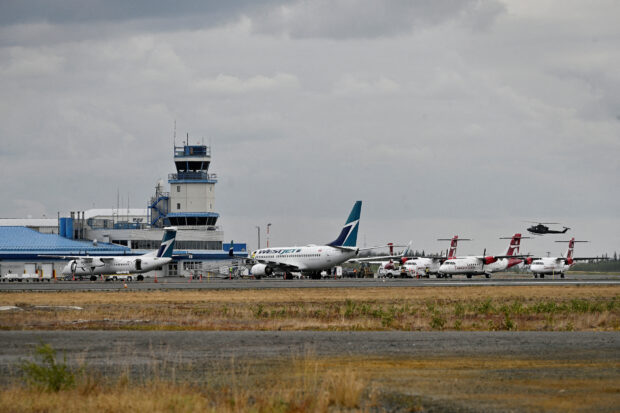Last week, Canadians took to social media to express their frustration with airlines as prices for commercial flights out of Yellowknife skyrocketed up to 10 times their normal rate. This surge in prices occurred just as residents were ordered to evacuate due to raging wildfires in the area. In response to the outcry, carriers like Air Canada have promised to cap prices on Yellowknife flights. However, implementing this change can be time-consuming as airlines must manually override automated systems that raise fares during times of high demand.
So, how do airlines handle a sudden increase in demand on a specific route? Chris Amenechi, the founder of startup SeatCash, which offers a flight price prediction product, explains that airlines set a range of ticket prices based on various factors including timing of purchase and demand. When there is a spike in demand, lower-priced fares quickly sell out, and the remaining seats transition to higher priced fares. In circumstances like the Yellowknife situation, where the number of flights is limited, the cost of flying can become exorbitant due to the lack of available seats.
Amenechi notes that sometimes only one first or business class seat may be available, further driving up prices. While Air Canada claims that the exorbitant prices of flights from Yellowknife to Calgary that were circulating on social media were aggregated fares from booking websites, they have committed to correcting these fares whenever possible. They also confirmed that they would refund passengers who purchased fares before they were corrected.
Travel site Expedia Group states that airlines have the freedom to adjust prices and availability as they see fit. It is worth mentioning that during times of disaster, airlines still have the power to lower prices, as exemplified by several U.S. carriers offering $19 fares for a 40-minute evacuation flight from Maui to Honolulu during recent wildfires in the area.
U.S. aviation analyst Robert Mann suggests that carriers may have learned from a past incident in 2015 when increased demand for flights due to a derailment on an Amtrak train caused accusations of price gouging. This incident led to manually capped fares and carrier intervention.
In conclusion, while airlines face challenges in managing sudden surges in demand on specific routes, they have the ability to adjust prices and availability to accommodate unique circumstances such as disasters. The case of airlines in Canada dealing with increased demand during the Yellowknife wildfires highlights the need for manual intervention and the commitment of carriers to address inflated fares.
Denial of responsibility! VigourTimes is an automatic aggregator of Global media. In each content, the hyperlink to the primary source is specified. All trademarks belong to their rightful owners, and all materials to their authors. For any complaint, please reach us at – [email protected]. We will take necessary action within 24 hours.


